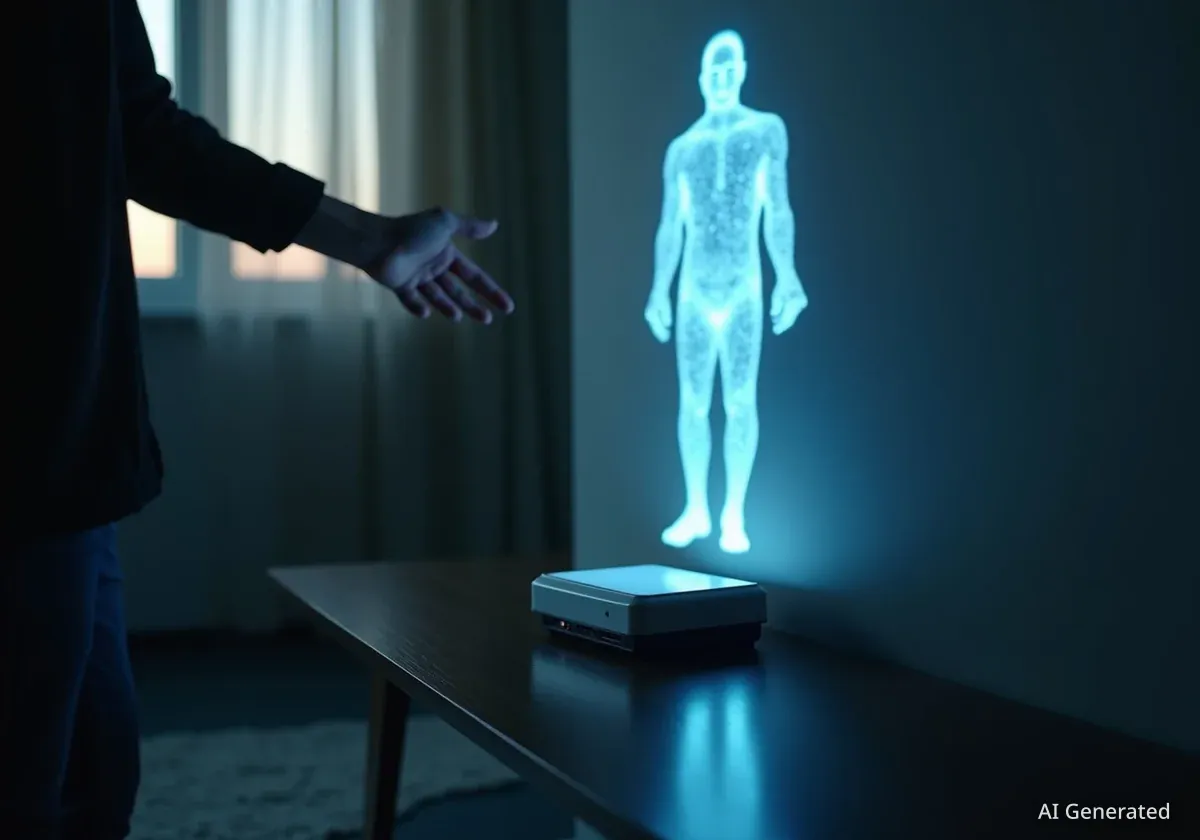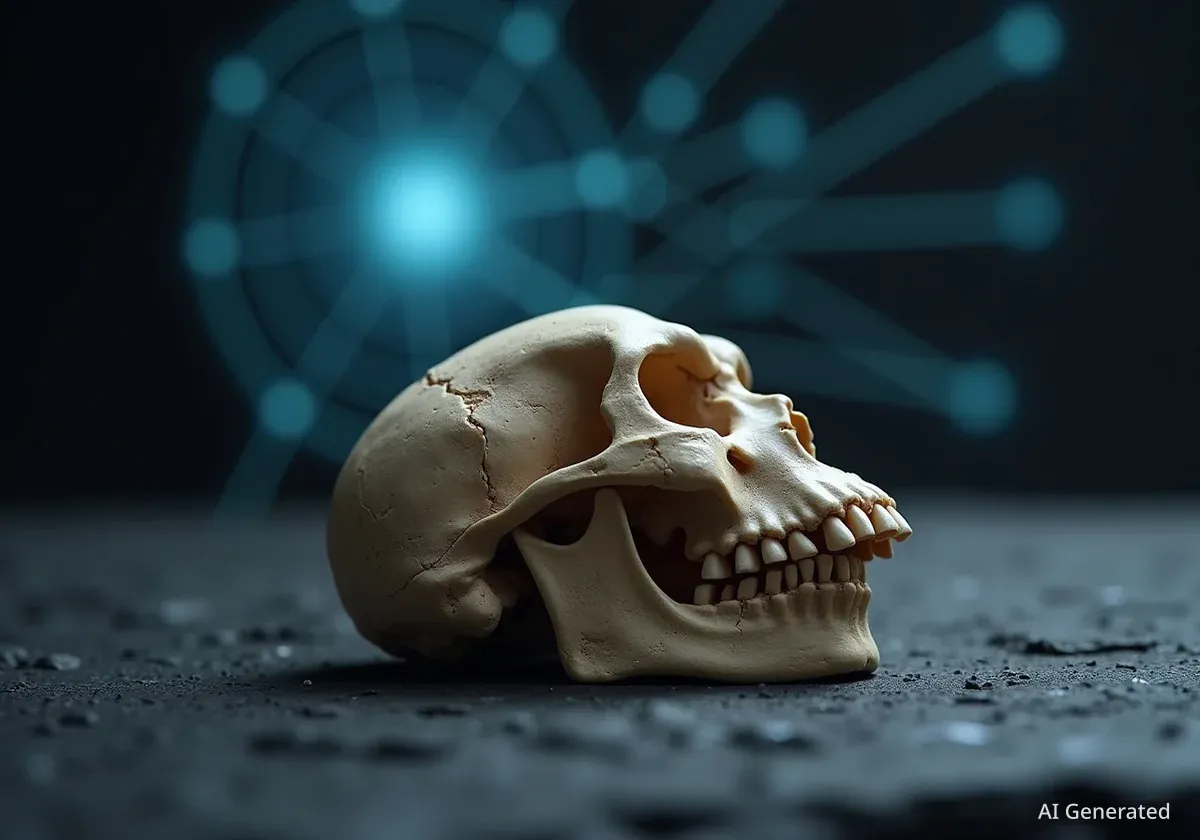A new industry known as "grief tech" is using artificial intelligence to create interactive digital versions of deceased individuals. These AI-powered avatars, or "griefbots," allow living relatives to communicate with a simulation of their loved ones through text, voice, or video, raising complex questions about technology's role in the grieving process.
The concept, once confined to science fiction, is now a commercial reality due to rapid advancements in generative AI. Several startups are offering services that create digital personas based on a person's digital footprint, interviews, and video recordings. While some users find comfort in these interactions, the technology also presents significant ethical, psychological, and data privacy challenges that society is just beginning to address.
Key Takeaways
- Grief technology uses AI to create interactive digital simulations of people who have passed away.
- Companies utilize various methods, including pre-recorded videos, extensive interviews, and training AI models on a person's digital communications.
- The technology raises major ethical concerns regarding consent, data ownership, and the potential to complicate the natural grieving process.
- The market for these services is growing, with a potential value linked to the multi-billion dollar mental health industry.
From Science Fiction to Commercial Reality
The idea of communicating with a digital replica of a deceased person was famously explored in the 2013 television episode 'Be Right Back' from the series Black Mirror. In the story, a grieving woman uses an AI service to recreate her late partner, first as a chatbot and eventually as a physical android. What was once a dystopian concept is now an emerging technological field.
The widespread adoption of AI chatbots like ChatGPT and Anthropic's Claude has increased public comfort with conversational AI. This cultural shift has paved the way for more specialized applications, including those designed to address profound human experiences like loss and grief. The technology is no longer theoretical; it is being actively developed and marketed to consumers.
What is Generative AI?
Generative AI refers to artificial intelligence models that can create new content, such as text, images, or sound. In grief technology, these models analyze vast amounts of data from an individual—like their writing style or speech patterns—to generate new responses that mimic the person's unique way of communicating.
Different Approaches to Digital Recreation
Companies in the grief tech space employ several distinct methods to create digital versions of individuals. The complexity and realism of the final product depend on the type and amount of data used to build the AI model.
Video-Based Avatars
One prominent approach involves creating interactive video chatbots. The U.S.-based company StoryFile, for example, records individuals answering hundreds of potential questions before their passing. After they have died, loved ones can ask questions, and the system uses AI to select and play the most relevant pre-recorded video response, creating the illusion of a live conversation.
Voice-Centric Digital Personas
Other services focus on recreating a person's voice and conversational style. HereAfter AI conducts hours of interviews with a person, recording stories and memories. It then uses this audio data to build a voice-based app. Family members can then interact with the app, asking questions and hearing responses in the familiar voice of their loved one, generated by the AI.
Comprehensive Digital Cloning
The most advanced method involves training an AI on a person's complete digital footprint. Startups like You, Only Virtual go beyond interviews by analyzing years of text messages, emails, and voice recordings. This data allows the AI to learn a person's vocabulary, tone, and even patterns of thinking to create a digital clone that can generate novel responses consistent with the original person's personality.
The Ethical and Psychological Maze
While griefbots may offer temporary comfort, mental health experts and ethicists warn of potential negative consequences. A primary concern is that these interactions could disrupt the natural grieving process, which involves acknowledging the finality of death and finding closure. Continuous communication with a digital replica might create a form of denial, making it harder for individuals to move forward.
"The ability to interact with a digital version of a deceased loved one could complicate mourning by preventing closure. It introduces a new dynamic to grief that we don't fully understand yet."
Data privacy is another major issue. The digital essence of a person is built on highly personal information. Important questions remain unanswered: Who owns this data after the person dies? What happens if the company storing it is hacked or goes out of business? The potential for this sensitive data to be misused is a significant risk.
Key Ethical Questions
- Consent: Should a living person have the right to opt out of being digitally recreated after their death?
- Authenticity: How is the AI's portrayal of the deceased managed to ensure it is respectful and accurate?
- Misuse: What prevents someone from creating a digital clone of a living person without their permission?
The Business of Digital Afterlife
The potential market for grief technology is substantial. As a rough comparison, the behavioral health services market in the United States is valued at approximately $300 billion per year, according to healthcare financial advisory firm Bourne Partners. If even a small fraction of this spending shifts toward technological grief support, the industry could be worth billions.
The business models for these services are still evolving. Companies are exploring several payment structures:
- Subscription Model: Users might pay a monthly or annual fee for continued access to the digital avatar, similar to services like ChatGPT Plus.
- Hourly Billing: Access could be billed by the hour, positioning the service as a form of on-demand digital therapy.
- One-Time Purchase: Some companies might offer the option to purchase the digital decedent's AI model outright, giving the family complete ownership.
The cost of these services could vary widely. While a simple chatbot might be relatively affordable, a highly realistic physical replica, like the humanoid robots being developed by companies like Tesla, could be very expensive. Elon Musk has estimated that Tesla's Optimus robot could cost up to $70,000, providing a possible price point for a future physical embodiment of a digital companion.
As society continues to integrate AI into daily life, communicating with digital versions of the deceased may become more common. The industry is moving beyond speculative fiction and into a new market that sits at the complex intersection of technology, commerce, and one of life's most fundamental experiences: loss.





